#computer hardware reviews
Explore tagged Tumblr posts
Text
AMD Ryzen: A Game-Changer in Processor Technology
Introduction AMD’s Ryzen processor series has revolutionized the CPU market, offering exceptional performance, value, and versatility. With their innovative architecture and competitive pricing, Ryzen processors have gained immense popularity among gamers, content creators, and everyday users. In this comprehensive guide, we’ll delve into the key features, benefits, and specifications of Ryzen…
#AMD#AMD Ryzen#computer hardware#computer processor#content creation processor#CPU#CPU comparison#CPU market#desktop processor#electronics#future technology#gadget reviews#gadgets#gaming processor#innovation#Intel#laptop processor#mobile technology#PC hardware#processor benchmarks#processor buying guide#processor comparison#processor performance#processor price#processor review#processor specs#Ryzen#Ryzen processor#tech reviews#technology
0 notes
Text
Ultimate Cooling Showdown: 5 Top CPU Coolers for Ryzen 7 7800X3D
This blog is an Amazon affiliate, which means that if you click on a paid link from this website that takes you to Amazon and you purchase a product, I will receive a small commission. You can find links to Amazon in the highlighted words. AMD’s latest Ryzen 7000 series with 3D-V Cache promises a significant leap in performance, but keeping that power tamed requires a top-notch CPU cooler. This…
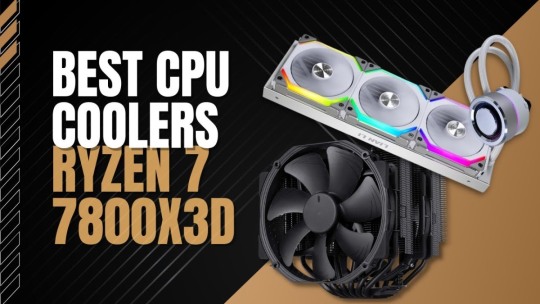
View On WordPress
#3D V-Cache#AIO liquid coolers#air coolers#AMD Ryzen 7000 series#budget CPU coolers#computer hardware#cooling solutions#CPU coolers#gaming PC#High-performance cooling#overclocking#PC components#pc cooling#performance cooling#RGB lighting#Ryzen 7 7800X3D#silent coolers#tech reviews
1 note
·
View note
Text
Battery Types For Bluetooth Headphones
Watching TV without disturbing others is a big problem for our company. I like to watch out TV before going to sleep and my wife always complains about security alarm and we end up having arguments over the idea. This is why I started looking doing this occurs headphones to use while television. I identified these wireless headphones that are very affordable and now I don't watch TV with anything other than the usual pair of Sennheiser RS 130 Wireless Surround Sound Headphones. An individual are someone really likes having a brilliant acoustic experience while watching TV, may really actually check out this model.

youtube
Before the what, you'll need to answer the so just why. What is goal in purchasing set of headphones exactly where there is will you be with them? Will you buy headphones and put them on just to while away the time at school, doing the grocery possibly in your bed room? If you choose them on your own way to school or work, will you be walking or crossing streets? If so, maybe earphones may very well be the more sensible choice because tend not to drown out the noise of the environment as many as headphones, which may incapacitate industry to hear onrushing atv's.
Sony seems to have a great set of Bluetooth Sleeping Headphones known as the MDR-NC500. These headphones use digital noise canceling that can the whole ANC anywhere up to another step. It uses the digital system to select a filter sound for outside noise so it truly is more good at blocking out sounds. Are cheaper . a monitor switch so you don't require take away from the headphones means positivity . have to pay attention to external sound. This model has gotten rave reviews on comfort as well as top quality of sound.
My only criticism of this occurence otherwise brilliant product reality that you cannot charge it via a USB link. However, you can expect up to 32 hours listening time on one single charge if not more to 600 hours standby time. They weigh buying.academy/ under 11 oz of. The suggested retail expense is $250, but shop headphones around and obtain probably fare best.
Have a wonderful bowl of mashed potatoes -the natural sleeping prescription. Have some kind of food that generally forces you to be tired. And so go rest about half-hour or hour later. Do not drink liquids as much more wake you out of trouble of a sleep.
These are something which use on a nightly framework. I only wish that I had started with him or her sooner. During our childhood I lived near a busy street and also the noises would always keep me up. Some people find the noises regarding your city comforting, but I did so not at all.
Everybody loves gifts. And, top ideas for gifts for sweet sixteen birthday are all over. The gift does not always have in order to an objective. Just being together with friends and family and having a wonderful time is a gift alone.
#gifts#shopping and product reviews#electronics#personal tech#computers and technology#self improvement#arts and entertainment#music#travel and leisure#ears hearing#health and fitness#sleep snoring#hardware#mobile cell phone#communications#gaming#audio video#home improvement#Youtube
0 notes
Text
What Are The Best Music Production Laptop in 2023?
Interested in finding the best music production laptop? We share 9 of the best laptops on the market if you're a music producer
Introduction – What Makes A Good Music Production Laptop?Best Music Production Laptops That Are On The Market1. Dell XPS 172. Apple MacBook Pro 14-inch (M2, 2023)3. Lenovo ThinkPad X1 Yoga4. Samsung Galaxy Book3 Pro5. Apple MacBook Air (M2, 2022)6. Dell XPS 13 OLED7. MacBook Pro 13-inch (M2, 2022)8. Apple MacBook Air M19. Microsoft Surface Pro 9Frequently Asked Questions (FAQ)Mac OS vs…

View On WordPress
#Brand Recommendations#Budget Options#Hardware Specifications#Laptop Brands#Laptop Buying Guide#Laptop Reviews#Laptops#music computer#Music Creation#music laptop#music production#Music Production Tips#Music Production Tutorials#performance#Portability#Professional Use#Sound Card Compatibility#sound design#studio equipment
0 notes
Text
Smartphone cameras are NOT getting worse. (See below for phone photography tips)
I've now seen 3 pro photographers reviewing the iPhone 16 and complaining the cameras are "worse" and blaming Apple for not including revolutionary new camera technology.
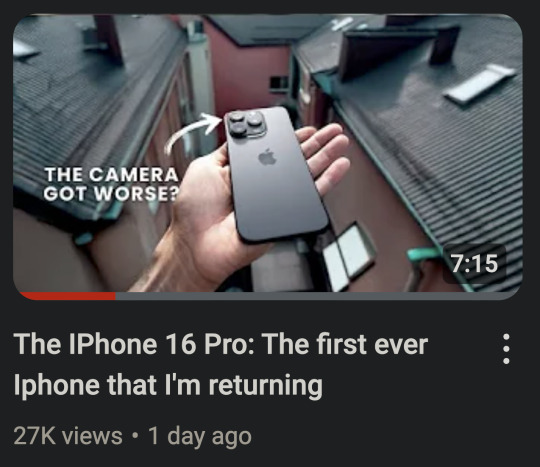

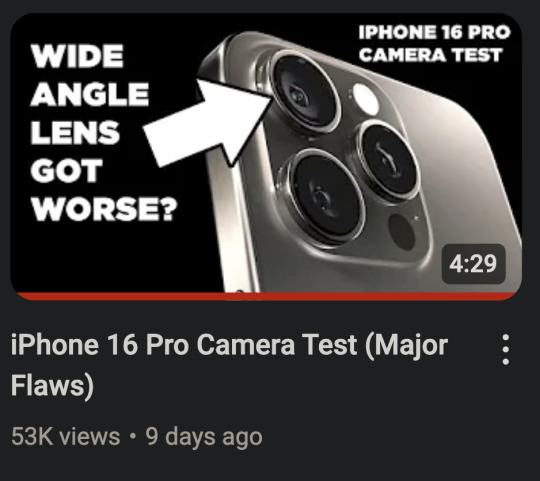
And I suppose this is partly Apple's fault. Their marketing and hype machine always goes overboard. But also, that's just how marketing works. Samsung has a "200 megapixel" sensor and Sony has a "Zeiss" lens. And I think it is unrealistic to expect smartphone companies to say "This product has entered the iterative phase and each new model will only be marginally improved over the last one."
Smartphones (from any brand) have become an appliance. You don't buy a new model of microwave every year. And you don't expect every new model of microwave to have new revolutionary technology. And that is pretty much the expectation you should have with most computer hardware from here on out.
And in some ways, that is a good thing. That means the design of the phone has pretty much been perfected and it will last you a long time if you take care of it. You will not be left behind and your phone will be able to handle any new software for most of its lifespan.
So, is Apple getting lazy or is there a reason their hardware is stagnating?
It seems that neither money nor marketing can change the laws of physics.
They cannot make transistors much smaller. Phones and computers are about as fast as current hardware designs can make them (unless there is a shocking scientific breakthrough). From here on out, heavy compute tasks that are beyond your phone or computer will be done in the cloud on giant computer clusters. Thankfully computers and phones seem to be plenty fast for the majority of tasks we ask of them.
I remember Katrina telling me her new computer didn't seem any faster. And I explained the computing tasks she does regularly were not really affected by the increased power and speed of her new computer. If something took 0.1 seconds before and now it takes 0.05 seconds, that is twice as fast. An increase in speed that looks fantastic in advertisements. But it is hard for our brains to perceive. She just didn't do anything on her computer that took it long enough for her to notice. But having a faster and more powerful computer/phone will increase its lifespan and resale value, so it is still prudent to get the best things you can afford at time of purchase.
And I'm afraid smartphone cameras are hitting their own hardware limitations. They can't make the sensors much larger to get better depth of field and low light performance. And cramming in more megapixels doesn't actually add much more detail, if any.
It's physics.
Again.
You cannot get any more performance out of a small plastic lens. Why do you think pro photographers haul around 10 pound lenses still?

There is a formula for detail that never seems to be explained in any camera marketing.
Here is the simplified version...
Detail = Sensor x Lens
Let's say 1 is perfection. You have a sensor that performs at 0.5 and a lens that performs at 0.2.
The total detail will be 0.1.
But in the new model you increase the performance of the sensor to 0.8. WOW! That's so close to 1!
The total detail will be... 0.16.
Now let's imagine we've discovered a magic, physics-defying tiny plastic lens that performs at 0.8 as well.
The total detail jumps to 0.64!
But we all get sucked into a wormhole because we violated the laws of the universe.
Even if you were to design a near perfect (perfect is impossible) sensor that scores 0.99.
Without that magic plastic lens... 0.198
This is why I put Samsung's "200 megapixel" sensors in quotes. Because when paired with the same tiny plastic lens, there isn't much improvement. And that's why a 12 megapixel DSLR from 10 years ago with a giant honking lens can still capture more detail.
Most of the quality from smartphone cameras comes from the computational software processing. Phones actually take many photos at once and combine them to get you a decent image.

While that is still improving a little bit each generation, those improvements are stagnating as well. Until image processing can do a better job of inventing more detail realistically, smartphones are going to have to obey the laws of physics.
So... why are photographers saying the iPhone cameras are worse?
First, the ultra wide angle lens looks softer in low light.
And if you zoom between 1x and 5x, the images look less detailed.
But neither of those things make the cameras *worse*. In fact, the cameras are better for the most part. It's just that Apple decided to compromise on one aspect to improve another. Probably due to market research telling them most people prioritize certain things over others when taking photos.
They increased the resolution of the ultra wide angle sensor to match the detail of the main sensor, but that seems to have lowered the low light performance of the ultra wide. So in good light, you will see an improvement in sharpness. But they could not increase the sensor size to compensate and smaller pixels can have trouble with dim conditions. They probably discovered that people mostly use that lens in good light and they would appreciate the bump in detail more.
But pro photographers often photograph in more challenging lighting conditions because you can capture a more artistic shot. I don't think I could have gotten this shot on a smartphone.

But photo normies are just taking pics of their kids doing weird kid shit.

They aren't really trying to push the limits of their ultra wide angle lenses.
And they increased the zoom of the telephoto lens to 5x from 3x because most people never used the 3x. So images at 5x look great now, but unfortunately if you use anything between 1x and 5x, your image will be *digitally* zoomed. Which is never as good as optical zoom. They basically crop the photo, zoom in, and add sharpening.
So they prioritized people having longer reach and more zoom at the expense of that middle zoom range. Every camera system makes tradeoffs and compromises.
And I hate that I always feel like I am defending Apple, because they do have misleading and dishonest marketing regarding a lot of aspects of their tech. But hating on Apple gets more clicks so content creators also make misleading and dishonest claims.
And so we are just surrounded in a circle of hyperbole from all sides.
Now, if you know these limitations, you can change your approach to photographing stuff to keep them from being an issue. You can reap the benefits without dealing with the new compromises.
Here are some tips to help owners of the new iPhone, but also everyone else too.
Smartphone Photography Tips
Whenever possible, try to use the main 1x camera at only 1x zoom. This has the largest sensor with the most detail and works best in the lowest light. Only use the ultra wide or telephoto if you cannot get the photo otherwise. If you aren't sure you have enough light for ultra wide, take the photo, and then as a safety, take two photos with the main camera side by side and stitch them later with a pano app.
"Zoom with your feet" and don't use "in-between" zooms. Let's say your lenses do 0.5x, 1x, and 5x zoom. Even though you have the option to use other zooms, like 2x or 3x, that is going to compromise your picture quality. It is essentially going to crop your photo and enlarge it, which causes a loss of detail. If fact, if you use 4.5x instead of 5x, your picture will probably look like trash. You are always going to get better results if you can move closer or step back so that you are using the native focal length of your chosen lens. For example, let's say you are taking a photo and you judge the best framing to be at 4x. But you still have 10 feet of space behind you. If you back up and then zoom in to 5x, the phone will switch to that lens and you will get a much clearer picture.
Rule of thumb...
1 to 3x... try to move closer.
4 to 5x... try to move back.
If you hit a wall and end up at 4.5x, you might see if you have a panorama mode and try that instead. Switch to your 5x and do the pano. Or you can take two photos and then stitch them together with software later on. (Stitching panos with an app later will give better quality than pano mode, especially in low light.)
Low light needs stability. Get some sort of stabilizing device for low light photos. Either a phone case that lets you stand up the phone on its own or a mini tripod.
This thing folds to the size of a credit card.
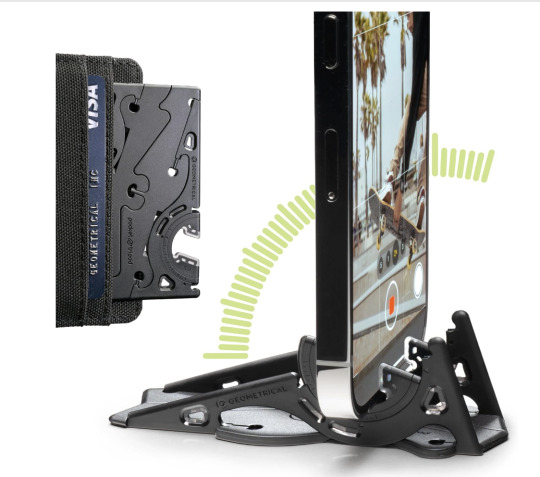
Your phone will detect when it is stable and not being handheld. It will then automatically extend its shutter speed allowing it to drink in more light and give you a better picture.
Tripods are photography magic and will improve your low light photos quite a bit. Motion blur of moving subjects can still be an issue, but photos of a cityscape or landscape will look great.
For selfies, shoot a little bit wide and then crop in. This goes a little contrary to my earlier advice saying cropping lowers detail, but this is specifically for shooting a face. The 0.5x and 1x lenses on smartphone cameras are fairly wide angle. This can cause unflattering proportions with human faces. Wide angle lenses exaggerate distance. Near things look very near and far things look very far. To a wide angle lens, the tip of your nose looks like it is super close but your ears seem like they are a mile away. And that's why you may look a bit "alien" in your selfies.
People's natural instinct is to "fill the frame" with a face. The outer edges of a wide angle lens are more distorted than the very center. So try to keep faces away from the edges of the frame.
And one other trick you can do for selfies and pictures of faces is step back a few feet. Sometimes this is hard, especially with selfies, as your arm is only so long... but if you can take your face photos from just a little bit farther back, you will almost entirely eliminate unflattering distortion. In some cases, just stretching out your arm as far as it will go is enough.
Then you just crop the image with the framing you originally wanted, and your facial proportions will look great.
An example...

Here the distortion is bad because I am not in the center and the lens is too close to my face. The lens thinks my nose is really close and my ears are in Canada.

But when the lens is farther back the edge distortion is less prevalent and my nose and ears (relative to the lens) seem roughly the same distance away. So my proportions look great, but I don't quite have the framing I want.
But with a little cropping...


For social media there is still plenty of resolution to crop in. Cropping isn't bad, it's just always better to use it as a last resort or in a special circumstance like this. I get roughly the same framing as in my wide angle shot, but I don't look like I'm behind a door's peephole trying to sell you the Good News.
I wish they made a "mini" selfie stick that only extended a foot or so. With the main camera that is usually all people need to undo any wide angle issues. I have one of those mini tripods and that works well, but there is no activation button so I have to do a timer. Mirrors work great to help you get some selfie distance.
In any case, all cameras have limitations and compromises. Clickbait titles saying something is WORSE THAN THE OLD ONE are frustrating and wrong.
And people upgrading phones every year are silly. All current name brand smartphones have promised at least 5 years of software updates. I think Google and Samsung are offering 7 years on some models. And Apple has always just let you use your phone until it literally will not work with new software. Which has worked out to 8 years in some cases (with a battery swap).
Phones are now appliances. For now, hardware will improve 10 to 15% from generation to generation until physics breaks. So if you want a 50% improvement, wait 5 years and you'll think your new phone is awesome. If you upgrade every year, it is going to be difficult to see the change.
I hope to be starting a little course on smartphone photography in the near future. All modern phones are capable of taking amazing pictures. And as long as you understand their limitations you can mitigate or avoid them. And that is what I plan to teach.
700 notes
·
View notes
Text
So I don't know how people on this app feel about the shit-house that is TikTok but in the US right now the ban they're trying to implement on it is a complete red herring and it needs to be stopped.
They are quite literally trying to implement Patriot Act 2.0 with the RESTRICT Act and using TikTok and China to scare the American public into buying into it wholesale when this shit will change the face of the internet. Here are some excerpts from what the bill would cover on the Infrastructure side:
SEC. 5. Considerations.
(a) Priority information and communications technology areas.—In carrying out sections 3 and 4, the Secretary shall prioritize evaluation of— (1) information and communications technology products or services used by a party to a covered transaction in a sector designated as critical infrastructure in Policy Directive 21 (February 12, 2013; relating to critical infrastructure security and resilience);
(2) software, hardware, or any other product or service integral to telecommunications products and services, including— (A) wireless local area networks;
(B) mobile networks;
(C) satellite payloads;
(D) satellite operations and control;
(E) cable access points;
(F) wireline access points;
(G) core networking systems;
(H) long-, short-, and back-haul networks; or
(I) edge computer platforms;
(3) any software, hardware, or any other product or service integral to data hosting or computing service that uses, processes, or retains, or is expected to use, process, or retain, sensitive personal data with respect to greater than 1,000,000 persons in the United States at any point during the year period preceding the date on which the covered transaction is referred to the Secretary for review or the Secretary initiates review of the covered transaction, including— (A) internet hosting services;
(B) cloud-based or distributed computing and data storage;
(C) machine learning, predictive analytics, and data science products and services, including those involving the provision of services to assist a party utilize, manage, or maintain open-source software;
(D) managed services; and
(E) content delivery services;
(4) internet- or network-enabled sensors, webcams, end-point surveillance or monitoring devices, modems and home networking devices if greater than 1,000,000 units have been sold to persons in the United States at any point during the year period preceding the date on which the covered transaction is referred to the Secretary for review or the Secretary initiates review of the covered transaction;
(5) unmanned vehicles, including drones and other aerials systems, autonomous or semi-autonomous vehicles, or any other product or service integral to the provision, maintenance, or management of such products or services;
(6) software designed or used primarily for connecting with and communicating via the internet that is in use by greater than 1,000,000 persons in the United States at any point during the year period preceding the date on which the covered transaction is referred to the Secretary for review or the Secretary initiates review of the covered transaction, including— (A) desktop applications;
(B) mobile applications;
(C) gaming applications;
(D) payment applications; or
(E) web-based applications; or
(7) information and communications technology products and services integral to— (A) artificial intelligence and machine learning;
(B) quantum key distribution;
(C) quantum communications;
(D) quantum computing;
(E) post-quantum cryptography;
(F) autonomous systems;
(G) advanced robotics;
(H) biotechnology;
(I) synthetic biology;
(J) computational biology; and
(K) e-commerce technology and services, including any electronic techniques for accomplishing business transactions, online retail, internet-enabled logistics, internet-enabled payment technology, and online marketplaces.
(b) Considerations relating to undue and unacceptable risks.—In determining whether a covered transaction poses an undue or unacceptable risk under section 3(a) or 4(a), the Secretary— (1) shall, as the Secretary determines appropriate and in consultation with appropriate agency heads, consider, where available— (A) any removal or exclusion order issued by the Secretary of Homeland Security, the Secretary of Defense, or the Director of National Intelligence pursuant to recommendations of the Federal Acquisition Security Council pursuant to section 1323 of title 41, United States Code;
(B) any order or license revocation issued by the Federal Communications Commission with respect to a transacting party, or any consent decree imposed by the Federal Trade Commission with respect to a transacting party;
(C) any relevant provision of the Defense Federal Acquisition Regulation and the Federal Acquisition Regulation, and the respective supplements to those regulations;
(D) any actual or potential threats to the execution of a national critical function identified by the Director of the Cybersecurity and Infrastructure Security Agency;
(E) the nature, degree, and likelihood of consequence to the public and private sectors of the United States that would occur if vulnerabilities of the information and communications technologies services supply chain were to be exploited; and
(F) any other source of information that the Secretary determines appropriate; and
(2) may consider, where available, any relevant threat assessment or report prepared by the Director of National Intelligence completed or conducted at the request of the Secretary.

Look at that, does that look like it just covers the one app? NO! This would cover EVERYTHING that so much as LOOKS at the internet from the point this bill goes live.
It gets worse though, you wanna see what the penalties are?

(b) Civil penalties.—The Secretary may impose the following civil penalties on a person for each violation by that person of this Act or any regulation, order, direction, mitigation measure, prohibition, or other authorization issued under this Act: (1) A fine of not more than $250,000 or an amount that is twice the value of the transaction that is the basis of the violation with respect to which the penalty is imposed, whichever is greater. (2) Revocation of any mitigation measure or authorization issued under this Act to the person. (c) Criminal penalties.— (1) IN GENERAL.—A person who willfully commits, willfully attempts to commit, or willfully conspires to commit, or aids or abets in the commission of an unlawful act described in subsection (a) shall, upon conviction, be fined not more than $1,000,000, or if a natural person, may be imprisoned for not more than 20 years, or both. (2) CIVIL FORFEITURE.— (A) FORFEITURE.— (i) IN GENERAL.—Any property, real or personal, tangible or intangible, used or intended to be used, in any manner, to commit or facilitate a violation or attempted violation described in paragraph (1) shall be subject to forfeiture to the United States. (ii) PROCEEDS.—Any property, real or personal, tangible or intangible, constituting or traceable to the gross proceeds taken, obtained, or retained, in connection with or as a result of a violation or attempted violation described in paragraph (1) shall be subject to forfeiture to the United States. (B) PROCEDURE.—Seizures and forfeitures under this subsection shall be governed by the provisions of chapter 46 of title 18, United States Code, relating to civil forfeitures, except that such duties as are imposed on the Secretary of Treasury under the customs laws described in section 981(d) of title 18, United States Code, shall be performed by such officers, agents, and other persons as may be designated for that purpose by the Secretary of Homeland Security or the Attorney General. (3) CRIMINAL FORFEITURE.— (A) FORFEITURE.—Any person who is convicted under paragraph (1) shall, in addition to any other penalty, forfeit to the United States— (i) any property, real or personal, tangible or intangible, used or intended to be used, in any manner, to commit or facilitate the violation or attempted violation of paragraph (1); and (ii) any property, real or personal, tangible or intangible, constituting or traceable to the gross proceeds taken, obtained, or retained, in connection with or as a result of the violation. (B) PROCEDURE.—The criminal forfeiture of property under this paragraph, including any seizure and disposition of the property, and any related judicial proceeding, shall be governed by the provisions of section 413 of the Controlled Substances Act (21 U.S.C. 853), except subsections (a) and (d) of that section.
You read that right, you could be fined up to A MILLION FUCKING DOLLARS for knowingly violating the restrict act, so all those people telling you to "just use a VPN" to keep using TikTok? Guess what? That falls under the criminal guidelines of this bill and they're giving you some horrible fucking advice.
Also, VPN's as a whole, if this bill passes, will take a goddamn nose dive in this country because they are another thing that will be covered in this bill.
They chose the perfect name for it, RESTRICT, because that's what it's going to do to our freedoms in this so called "land of the free".
Please, if you are a United States citizen of voting age reach out to your legislature and tell them you do not want this to pass and you will vote against them in the next primary if it does. This is a make or break moment for you if you're younger. Do not allow your generation to suffer a second Patriot Act like those of us that unfortunately allowed for the first one to happen.
And if you support this, I can only assume you're delusional or a paid shill, either way I hope you rot in whatever hell you believe in.
#politics#restrict bill#tiktok#tiktok ban#s.686#us politics#tiktok senate hearing#land of the free i guess#patriot act#patriot act 2.0
898 notes
·
View notes
Note
WIBTA for putting in a fake negative review for my workplace? (👾👾👾 for easier search and recognition)
So I've worked at this local hardware store for a little over a year now. So far, it's been the most chill job I've had and has paid a bit better than the last one I worked at. The current staff, for the majority of them, I'm pretty chill with, except I (and a lot of the others) has had issues with two people: One of the managers (let's call him Reggie, 40sM) and one of the associates (we'll call him Cider, 40sM). Reggie is a recovering alcoholic and he's been keeping his sobriety by using marijuana, while Cider is an old friend of Reggie's that used to be a bartender. Reggie was hired on as a manager a couple months after I started, and a month after Reggie hired Cider.
From almost day 1 everyone has had some sort of issue with the two of them. For one, Reggie is always casually breaking the rules by wearing slippers to work (safety hazard, it's a damn hardware store and the floors are concrete), leaving for several minutes to even HOURS without saying anything to anyone while still on the clock, and worst of all he often hotboxes in his car so he comes back with a literal cloud of weed clinging to him. He's taken money out of the safes and store deposits for his own personal stuff, and then goes to replace the money later, and it took him over a year to actually start doing some of the basic manager stuff on the computer. I, and two other people, were taught some of those same manager stuff within 2 weeks. Mind you that we're still sales associates, but because we were taught this stuff Reggie would sometimes have us do some of the more tedious manager stuff under his code. So, when it looks like he's done a ton of work, in reality he was doing something like reprint sales tags and leaving the plaza to go home and walk his fucking dogs.
Cider on the other hand has been found smelling like alcohol, evidently being drunk on the job in front of customers, and we've had to clean up after him more than a few times in the bathrooms. Hell, Cider came in actually drunk on his first day working, and the manager on shift at the time (who wasn't Reggie) wanted to turn him immediately out the door.
The other two managers have both reported all this to the store owner, and even the store owner's son who co-owns the place has seen some of this stuff first-hand (He came up to one of them asking if it was just him or if Reggie reeked of weed). The both of them have even experienced Reggie's incompetency during truck orders when the other managers were on vacation. The store owner still hasn't done any sort of reprimanding to Reggie, despite that if the other managers did anything similar they'd be fired on the spot. Neither manager can say anything to Cider about his drinking, because then he'll just say something like: "Oh, I'm getting in trouble for having a little drink, when Reggie can be here every day smelling like weed?" Dude can be a good worker, but only when he's occasionally sober.
Basically, I want to create a throw-away google account and leave a 2~3 star review as customer saying that some of the associates smelled like weed and alcohol and seemed like they were under the influence. I know it sounds like a dick move to do this, but maybe if there's a public thing about it then the store owner will start addressing it. Maybe put in one every couple of weeks to make it really stack up and make an impact.
What are these acronyms?
54 notes
·
View notes
Text

ROM July 1977
Being aware of a connection between ROM magazine and Creative Computing had led me to post what covers I could find of a magazine that wasn't available online at the time. Now, I can link to the issues at last. Editor and publisher Erik Sandberg-Diment commented how he'd got into computers after reading Ted Nelson's Computer Lib/Dream Machines, only to find BYTE, Interface Age, Creative Computing, and Dr. Dobb's Journal somehow lacking as an introduction to the beginner and as speculation on "the future of something as monumental as the computer." This issue had no detailed hardware guides or reviews or software listings; it did have a column from Ted Nelson himself, an article about a motorcycle shop computerizing its inventory with a well-equipped Altair 8800, Lee Felsenstein explaining how he'd designed the SOL-20, and a lengthy excerpt from Joseph Weizenbaum's computer-critical Computer Power and Human Reason. "Digital foam," "the sexiest peripheral ever," was anticipated as something that would make a computer sensitive to touch.
13 notes
·
View notes
Text
When i built my first PC, I'd done a few upgrades, but Youtube did not exist yet so there were not endless videos of "This is how you build a PC". It was fiddly and fussy and i barked my knuckles and I did something temporarily terrifying but it worked out okay and I built my PC. Then prices on bare bones dropped precipitously so for a while I was just buying barebones and upgrading them. It was cheaper that way.
Last year, a couple of games came out that I really wanted to play but my 8 year old laptop, which was making a yeomanlike effort with most games, was just flat out not in spec anymore. So I started to research. Looked at Linus Tech Tips, then JaysTwoCents, then Gamer's Nexus, Paul's hardware, Hardware unboxed... LTT had a great "this is how you do it and this is what each part is supposed to sound like going in, yes the crunching noise here is okay, no your board won't die if you get a little regular thermal paste on it, very reassuring. I watched a lot of build videos, and finally, after a couple of months, I ordered parts.
Infodump under the cut
Now, picking parts is COMPLEX and HARD and FINICKY and it changes all the time. You can be an expert builder, take a couple years off and ignore buiding for a while, and come back and like, all the parts are different! Which parts are good deals has changed! But the fundamentals haven't really changed all THAT much, even since my first build. It's still motherboard, processor, cooler, RAM, storage, power supply, internet device, basically... but gone are IDE and even SATA is now pretty archaic. In 2024, your RAM will look pretty similar but the hard drive is a dinosaur and your storage is now basically a high tech stick of gum. Prices are wild, too. You can build a passable computer which can play most games for about $600 with new parts, or you can spent $4000 to get get the absolute tippy toppy "best" parts, and the parts being actively used and recommend and sold right now cover about FOUR YEARS of product development. This is NUTS. Most of the systems I've built fall in the cheap-to-middling range.
They're all competent at most games, though my mother is annoyed that she's having trouble getting Civ2 up and running on Windows 11 in 2024. I do fine with Alpha Centuari from GOG, but no, that's not good enough. (I like Alpha Centauri about 1000% better than Civ2, but when you've got a game, you've got a game, I guess.)
So where to start?
Look at the Youtubes of the folks I mentioned up top, and look for their "Top X of ___" videos. Most of them will ALSO include still-on-the-market for previous year stuff! This is great!
Think about what you need and what you're doing on your system. Unless you are doing competitive gaming and are made of money, you do not need the top of the line anything. It's not necessary and most people can't make use of it unless they're doing high powered stuff for money. In which case you probably know what you need already. Most people will be fine gaming at 1440p (2k monitor) or 1080p. Unless you have a giant fancy monitor already, the pricing sweet spot is probably expecting to spend about $140-150 for a 2k, 27 inch monitor. If your monitor is at normal monitor distance from your face, larger than that is not going to be easy to adapt to. You can get 1080p monitors for cheaper, but any larger than 24-27 inches, 1080p starts to look weird, so really 1440 is kind of ideal for the kind of computer you plan on using for the next 5-10 years. I don't go for refresh rates lower than 120hz at this point, but higher than 180 is not going to be noticeable for MOST people. The monitor i recently bought for $140-ish was a 180hz refresh rate 2k curved monitor (1440p.)
Once you know what kind of monitor you're aiming for, you can get a sense from those review videos of which cards will get you to the frame rate you want. Look for the games you want to play, and people comparing them at high/ultra settings, and look at the FPS that various cards offer. Keep in mind that there's a huge amount of technology aimed at boosting fps, and the upsampling is pretty good now. Nvidea cards are stupid expensive and have the majority of market share. I don't bother with them. The cards I've bought in the past 2 years include (all AMD): (Upgrading a very old system, AMD RX 6400, 4gb graphics card.) AMD RX 6650XT for two people on very tight budgets. AMD RX 6750XT for a mid-range system. RX6800 for two pretty good systems last year. RX7600XT for a casual gamer on a newer system. RX 7800XT for the fanciest system for the most avid gamer in the family. In 2024, I strongly advise going for a card which is at least 12 gb but preferably 16gb of VRAM. More than that is not yet really necessary for most systems at 1440p. The video card is the single most expensive component in most systems. I tend to build to the graphics card, but it is reasonable to set a budget, get the most reasonable parts you can afford for the rest of the computer and spend as much as you have left on the video card. 8gb cards are not likely to give optimal results long term, and since I build computers for people who hate changing computers, the only reason I would go with a smaller-than 12gb card is for someone who just doesn't game much and is unlikely to start playing the kinds of games that need it.
Then there's the processor side of things. Until Intel screwed the pooch this year, most of what we were putting together, parts-list-wise in my family were systems which had intel processors and AMD graphics cards, because that was the sweet spot for us price-to-performance wise. But if you have an Intel 13th or 14th gen processor, you need to update your bios, and we're still not 100% confident in them, as a community. There were a LOT of bad processors the past two years. Also, AMD came out with a bunch of reasonably priced kickass gaming processors, and those will be best for people whose primary purpose is gaming. The processors we've leaned on the most heavily include: Intel 12400 and 12600 processors and Intel 13600 processors. But recently, knowing I was about to build a FAST gaming PC, I knew I needed to get an AMD X3d processor, and my purchasing timing happened to correlate with the 9800X3d dropping, and I managed to order one... but the ship date was in JANUARY. And it's a Christmas present. And Trump is talking about tariffs, which WILL send prices through the roof. So I decided to build another computer, and ordered parts for it. So in order to get onto the platform that 9800x3d processor will need, I picked another processor which uses the same motherboard and got that, too. And then ordered inexpensive versions of that motherboard and other parts, and whatdyaknow, I'm building two computers. But the principal is pretty sound: If you need to build cost effectively, get a lower end processor for the motherboard of the processor you ultimately want, and upgrade later when prices drop. So all those Intel 12600 systems could, later, upgrade to a 14900k and get a huge performance boost if needed. On AMD, they tend to stick with a given motherboard ecosystem for a VERY long time, so people who bought AMD years ago can now upgrade to a perfectly capable 5800x3d and be fine, but AMD is now in the 9000s, and getting a 7000 series processor is on the same board as a 9000 series, so most of the time that's the best deal, EXCEPT for a 7800x3d which is almost as expensive as the 9800x3d for reasons.
Other parts are simpler. RAM: 32 gb is the sweet spot, DDR5 prices have come down okay. Most games can't and won't use more than 20 or so gb, but many will use over the 16gb that used to be the standard rec. You can, however, get 16gb and upgrade RAM in a few years.
Storage: Optimum for gaming is probably your operating system on a 500 gb C drive ssd, your games on a 1, 2 or 4 terabyte SSD. New builds will use a M.2 2280 ssd, and they fluctuate somewhat in price, but the performance boost of ANY NVME drive is going to be worth it over SATA or a hard disk. If you are just wanting to upgrade, upgrading to a SSD and increasing your ram will give a new lease on life to old computers and make them feel a whole lot more functional. If you have an open PCIE slot, you can get an adaptor board to allow you to install an M.2 drive even on an older system.
pcpartpicker.com will let you make build lists and tell you if there are incompatibilities but it isn't perfect at sourcing RAM for the correct processor family. It will also help you find best current pricing, but isn't always accurate.
newegg has a pc builder function which is helpful but only if you buy all your stuff there. If you live close to a microcenter, you'll want to go there and shop their combo deals.
All the builder tools will give you a rough estimate of how much power you'll need. I go a bit over, but unless you're doing a stupid expensive build, you will be unlikely to need more than 850w for a gaming system and 600w for a "regular" system for someone who doesn't do much gaming. That allows a fair amount of headroom for upgrades, since power supplies often last the longest.
Cases are very subjective, but I've done a lot of building in Fractal G Focus cases, which are cheap, big enough for most parts and not the most convenient to build in. I dearly love the Lian Li Lancool 216 which I just built in for the first time, but it's big. REALLY nice cable routing though. Worth it just for the complete lack of barked knuckles, and the fact that you don't need to install like any extra fans beyond whatever your cooling solution is, and it's under $100. Which case you get might depend a lot on aesthetics or space considerations. Like, I paid extra NOT to have a glass side because I don't want extra lights around me, at all. My kid's has a lot of rainbow RBG. Hubby's has a glass side but minimal to no lighting.
Cooling solutions... for any higher end systems for heavy duty users (i.e. gaming a LOT with newer games, doing a lot of computationally heavy 3d modeling or whatever) I like using an aio watercooler. These can be easier to install even than air coolers now, as long as you do a little homework, and the ones I've bought were all under $100. Most users will do fine air cooling, and Gamer's Nexus has some dandy charts on gamersnexus.net that will help you figure out which coolers to use. (Hint, most of them are pretty good!) And for case fans, if you need extra, Arctic has 3-5 packs for super cheap.
But ultimately, if your computer is functioning okay for you, or just needs some upgrades and maintenance, you probably don't need to upgrade. Laptops are a whole 'nother ballgame completely. And you know how I built this system to play a couple of new games?
I ended up mostly playing my old favorites with better graphic settings. LOL.
No regrets, the system is SUPER functional and will last me years and if anything breaks I can fix it. And since then, I've helped two people buy parts, upgraded two computers and built systems for four other people and helped others put together parts list or figure out which laptop would be right for them. And the old computers? Are not ewaste yet, because the build process will allow a lot of moving around of parts to improve the old systems which can then be handed down to other family members. Even my old laptop went on to find use with another family member.
14 notes
·
View notes
Text
I'm going a little bonkers about the CrowdStrike thing. Now, I may be just a humble wrenchmonkey, but I'm a wrenchmonkey who has on occasion set up the hardware of mechanical systems so that the software that runs on them could be tested. And to my knowledge that testing consisted of
(1) Software has to pass unit tests on basic functions
(2) Human reviews the code
(3) Code is run on simulated hardware if possible
(4) Code is run on dedicated test hardware for in-the-loop testing with additional unit tests
(5) Code is deployed to a tiny number of in-field systems for days to weeks to encounter potential lower-probability issues, just in case
(6) Code is rolled out to the rest of the fielded units at an appropriate time
and none of these systems were numerous (hundreds of units max).
I want to know how on earth the antivirus commonly used by BANKS and 911 CALL CENTERS and AIRPORTS and HOSPITALS was able to introduce such an abysmal error. like. did it get test-deployed on Any Computers At All. Is it not normal for these places to have, like, a whole suite of different hardware/OS combos as a deployment validation thing? Or to do staggered rollouts in case of issues? How on earth did this get through???
10 notes
·
View notes
Text
I went down the PS2 Emulating/Reproduction Rabbit Hole so you don’t have to:
And here’s how to get your favorite PS2 games for cheap.
I was just gifted a used PS2 for my birthday which made me SO excited… until I looked up the cost of a lot of the games I want to play. Titles like Silent Hill 2 & 3 go for about $100 (USD) typically and the game I’ve been hunting for, Blood Will Tell, averages anywhere between $450- $700. Because these titles didn’t sell well initially but are popular now/have a sense of rarity to them, they cost a fortune. So do you spend a fortune on getting them or live without playing them?
Neither!
You emulate them or buy from a professional reproducer!
What is emulating?
According to Wikipedia the definition is: “in computing, an emulator is hardware or software that enables one computer system to behave like another computer system. An emulator typically enables the host system to run software or use peripheral devices designed for the guest system.”
TLDR; emulating (in video game terms) is taking a game and playing it on either a system it wasn’t originally made for OR a country/region it wasn’t designed to launch in.
Is emulation illegal?
No, emulating a game isn’t illegal. The only part that would be considered “illegal” is if you don’t own the actual ROM/game you’re emulating. For example, if I download Silent Hill 2 for free off the internet and emulate it on my PS2, that’s considered piracy because I didn’t actually buy the game.
Do I suggest emulating on the PS2, if not what is another option?
No, there’s something you can do that’s a lot easier than emulation. Emulation typically is for playing old games on a new system, commonly a PC. It takes a lot of software/hardware know-how to do and the average joe (me) doesn’t have that.
Another option is buying a reproduction and a reproducer. This requires a rapport with a third party professional and a the right system.
What is video game reproduction?
Reproduction is when a creator completely reproduces a game and burns it onto a disk, making multiple copies off of one game and making them available across different models and regions of the same system. In order to use the reproduction, one needs to download a software on their system that allows you to run homebrew/reproduced content.
Is reproducing a game illegal?
Well… yes. But the brunt of the legal ramifications is on the vendor and there has been no case of a person being charged with buying a reproduced game. Think of it as going to 9anime.to and watching a pirated anime, you’re watching pirated content which is illegal. But 9anime is providing that content and has the target on their back. The vendor I’ll be suggesting is literally on Etsy and has been for years, so that’s how little this is enforced.
If you’re paranoid about this then I obviously don’t suggest this option, I suggest trying to emulate the game but that means you’ll be buying whatever it is at full price. I’m just a random person on tumblr so you don’t have to listen to me at all lmao.
Here’s a screenshot of a reddit thread discussing this practice:
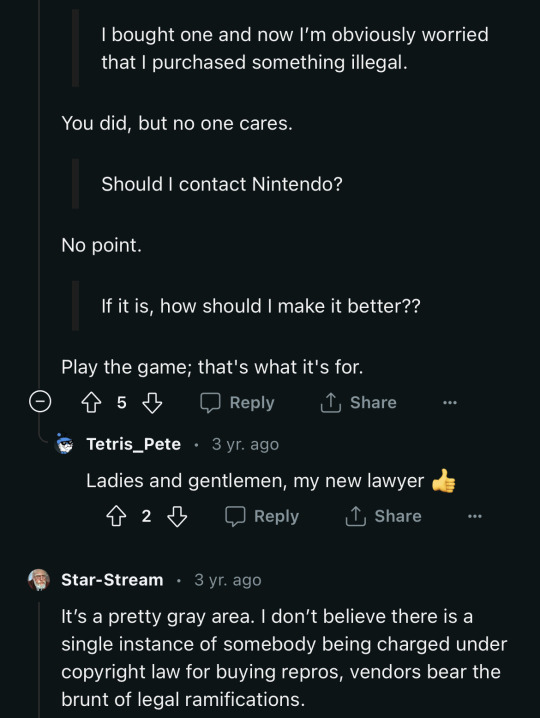

What reproducer do I suggest?
AndresCustoms on Etsy/Facebook Marketplace! He tests his products on many different systems from various different regions. He has an 4.8 star average review. I’ve read the review comments, consumers a very impressed with his work and he actively responds to his reviews. Andre also is easy to get in touch with if you have any questions on how to set up his FMCB cards or games. He only accepts refunds for defect disks of his, since that is his fault. Besides games he sells (average of $25) he also sells the hardware that allows you to play them, they’re FMCB cards ($15) all you do is stick one into the controller port and it’s good to go.

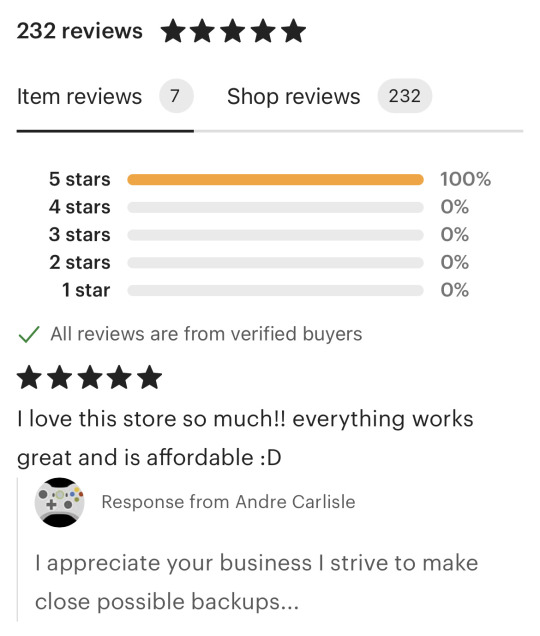
What to look out for with reproductions?
I don’t recommend buying off Ebay, they have a fraud department but you’re likely getting overcharged for what you’re buying. The largest portion of scams are on Ebay.
Scammers often sell reproductions for the cost of the real game titles, not only are you paying way more than it’s worth many of these tend to not work well or at all. That’s why reputable vendors who openly claim to be professional reproducers and have multiple ratings by real customers (i.e. AndresCustoms) are very important to consider when getting reproductions. Never buy a game that is inflated far above market price, unless it is mint condition and graded for collection purposes.
TLDR FOR ENTIRE POST:
PS2 games cost a shit ton of money these days
Emulation is mostly used to play retro games on modern devices, usually PCs
Emulation is hard to do unless you have technical know-how
Legal emulation requires the purchase of an authentic game
Reproduction is illegal under piracy laws
Reproduction under a reputable vendor can be a cheap way to get your favorite retro games and still run as if they where authentic copies
Keep your eye out for scams
#video games#ps2#playstation#playstation 2#emulator#emulation#video game#video game reproduction#reproduction#reproduce#modding#homebrew#tips#gaming#gaming tips#retro gaming
52 notes
·
View notes
Text
Oh Hey, Some Delisted Sonic Games

If there's one thing that anyone knows about the Sonic franchise, it's that the games have been up and down since 2006. On one hand you get games like generations and colors, on the other you get Boom and Shadow the Hedgehog, that's also their nose picking hand. There's even a name for this era, fans call it the Sonic Dark Age, and wouldn't you know it, some of these games have been delisted by Sega. A list of Sonic games that can only be played with either the original hardware, or good old piracy for those less legally inclined.
Quick disclaimer; for some reason there are a bunch of spin offs lumped into this era, racing games for example. Since they're not mainstream titles, they won't be included. There is also a lot of fan discourse as to when the dark age ends. It ranges from anywhere between 2009 to today. I'm sure I'll touch on those at some point in the future.
It goes without saying that the dark age was kicked off with the release of Sonic 06, infamous for being glitchy, not well optimized, and having a strange story with clashing character designs. It's very strange seeing proportional human designs alongside Sonic and friends. I could go on beating this dead horse, but I can't do much with a grease stain that's now a permanent mark on the floor. All we need to know is that it is one of the games Sega delisted as part of some spring cleaning back in 2010.
Two others were The Secret Rings, and The Black Knight, two games that were originally a part of a story book trilogy that put the characters in story book settings. The third game was cancelled due to poor reception and sales of the previous two, looking through the reviews, there were a lot of control issues.
Sonic Unleashed has recently had a resurgence in popularity, but at the time it didn't get much love due to the were-hog parts clashing heavily with the regular Sonic levels. It also had the typical issue of games back then wanting to be God of War.
Finally there's Sonic Boom, a game that was supposed to be the head of a multi media movement for the franchise. It was hyped up with all the tie ins. There were of course the toys, the comics and the show were very well received, and then the game came out on WiiU and it was was buggy, poorly written, poorly animated, and on a platform that was hemorrhaging money for Nintendo. The story behind how this game became the way it is is an epic saga full of miscommunication, deadlines, and fickle minds. It's honestly a miracle this game was even released. It was only released on WiiU and support for the console ended just this past April, so unless you have one of Nintendo's worst selling consoles, you're out of luck.
Most of the games listed above have been in Sega's shame corner for some time now, rereleases are unlikely except for maybe Unleashed. Their appeal is mostly for the novelty of playing a bad game, which is always a fun idea if you wanna see how much a game can struggle.
Now of course little old me wouldn't endorse piracy, I would never remind everyone how easy it is to download an emulator. While also reminding them to keep their anti viral software and computer up to date. You wouldn't download a car after all right?
9 notes
·
View notes
Text
The thing is, nothing will be done about it if I'm the only one complaining about it. Out of twenty one reviews on it on steam, only my review and one more are critical, and that latter one is just complaining about certain game bugs. I genuinely feel we were all massively bamboozled just so the company could make more money off of us, and I find it preposterous. It shouldn't be a given that all computer users use controllers to play games. It's a computer! We use keyboard and mouse, the actual given hardware of a computer!
Now, am I asking for people who bought it for computer to go complain to the store they bought it from? Probably, yeah. Cause they ain't gonna listen if there's only one bitch complaining about it while everyone else praises them and/or posts positive memes about it, and I would be turned into that bitch because of it. And all I'm asking for is a fair experience. Video game industries are already super sketchy with the way they work, and that's because we're letting them be like that. Making a game optimized for "computers" then asking the players for an external console controller is deceiving computer users, plain and simple.
Idk I'm just really bitter right now. I hate that companies can just do that and we can't do shit about it. I mean, we can, but...
12 notes
·
View notes
Text
Halo: Combat Evolved (review)

I finally played Halo: Combat Evolved, after 20+ years. I didn’t have an x-box and missed out on the 2003 PC port, so it was delayed until I bought the Master Chief Collection on sale for 10 euro on Steam in 2024. I played it on a Steam Deck, which took some tinkering with the X-box live account thingy, but worked out great, since this is a good shooter for a controller. One of the great controller FPS games actually.
How Halo: Combat Evolved changed FPS gameplay.
Halo: Combat Evolvedis the FPS game that was the turning point for the genre, that made FPS games definitely viable on consoles. And I think a lot of its success is because it’s designed to be played with a controller. Like a lot of Halo’s differences from the computer FPS formula of the time, are because it’s not built for the keyboard and mouse.
The major difference is the change in pace. Quake-style fps games had speedy movement, quick dodging and nimble aiming, that was enabled by the keyboard and mouse. Halo is much slower. Master Chief’s movement speed is very slow compared to the usual fps hero at the time, and the combat pace is accordingly slowed down compared to the frantic Quake-style.And this is to accomdate the relative slowness of aiming with a joystick.
The two-weapon limit is similarly a controller accommodation thing. FPS games then normally let you carry all the weapons in the game at once, and you could easily switch to them by hitting the right number key on the keyboard. But a controller doesn’t have number keys, so you only have a weapon switch button and can only carry two weapons at once.
Now Halo’s influence wasn’t all for the good. Halo’s limitations when designing for the X-box controller was one of those console limitations, like limiting saves, that the game industry turned into features that should be used even the limitations of hardware weren’t there. So until the indie retro-shooter trend, we got stuck with two-weapons and slow movement on PC FPS games too.
And even when playing Halo, Master Chief’s slow movement is kinda frustrating, as is only being able to carry two of the cool weapons at once. Still, when played on a controller, or something like the Steam Deck, the controls feels so intuitive, and so right.
It’s remarkable how Bungie pretty much re-invented the FPS genre to fit these limitations. The whole game is designed to fit these limitations, and still make the gameplay engaging. Halo might have been the slowest FPS on the market, but it uses this slowness to engage the player by making them think tactically. And the combat system rewards thinking and strategising more than fast movement and even faster trigger fingers.
Halo: CE is a game that is built more about using cover than dodging projectiles like in Doom. The first game does have a traditional health bar refilled with healthpacks, but that is not the basis of your defense, your regenerating energy shield is. The shield protects you from health damage until it is depleted from too much damage, at which point it has to recharge. And if your shields are down, you can take health damage. This is the game that popularized regenerating health, and stepping behind cover to recharge your shields is pretty much required. The player also needs to use cover to reload, or let their gun cool down (guns either have one or the other limitations). Doing a charge out of cover into the enemies can work out for the player (at least on lower difficulties), but it requires choosing the right moment, the right weapon and so on.
The two weapon limit is a limitation that you have to strategize around, especially with how the item placement in the levels are. The human kinetic weapons can be reloaded, and you usually start the mission with them, but you are heading into enemy territory and you can at best only occasionally find ammo for them. This encourages you to replace your human issued weapons with those you scavenge from the fallen covenant enemies. And the covenant plasma weapons can’t be reloaded, you use them until they run out of battery and then they’ll have to be replaced.
So weapons are disposable, you are pretty much constantly replacing the ones you have with new ones. And you have to think about what you pick up, about whether for this upcoming area to use short or long range weapons, or make decisions based what enemies that are in this area. And you can’t always find exactly the weapons you want, so at times you’ll have to improvise with what you do have. What weapon is best depends on what situation you are facing. A rocket launcher might be excellent if you are fighting enemy tanks in a wide-open area, but it becomes a waste of one of your two weapon slots if you carry it into close-quarters indoors combat where its splash damage becomes a problem for you. Just hanging onto a rocket launcher and its ammo until you reach a boss as you did in most FPS games at the time is not possible here.
What is the best weapon also depends on what enemies you are facing. The enemies in Halo: Combat Evolved are also more varied in behaviour and the best way to defeat them than most previous FPS enemy rosters. It’s still a game about shooting enemies until they die, but how you are meant to shoot them is far more complicated. And here the weapon design intersects with the design of the enemies in an interesting way.
Your main enemy are the Covenant empire, which consists of several alien species, and they not only look different, but act different, they vary in their AI/behavior, what weapons they carry and the best strategy to take them down.
The common grunts are unshielded, and go down easily, a simple headshot from a kinetic weapon will suffice. Turns out aliens react the same to a bullet to the head as humans do. The grunts will even run at the first sign of trouble, like if their elite leader is killed. But not all enemies are unshielded. The elites have energy shields covering their body, just like Master Chief does. So that means that the player has to take down the shield before they can actually damage the elite.
Here the central difference between the human weaponry and the covenant weaponry come into play. The humans use traditional kinetic weapons, firing lead bullets. These kinetic weapons work great on unshielded flesh, and if you land a headshot with one of the accurate, hard-hitting weapons, it’s a one-hit kill.
But energy shields are very good at resisting bullets, the shield will eventually break but it will take a lot of bullets to do so. The covenant instead tend to prefer plasma energy weapons, shooting plasma projectiles. On unshielded enemies, these are weaker than kinetic weapons. But they take down plasma shields fast, the plasma pistol can even do it in a single shot if you use its alt-fire.
This is the basic idea of a lot of Halo’s combat. It is fairly simple, but this alone is more complicated than the enemy and weapon design of most FPS games at the time, where for the most part it really boiled down to some guns having higher damage output, and some enemies having much higher HP than others. And it’s hard to see how it could be more complicated and still be fun.
For Halo this design leadsto the famous “noob combo”, of bringing down the shields of an enemy with a plasma pistol’s alt-fire, and then switching to a capable kinetic weapon to land a headshot, for a two-shot kill. Otherwise tanky and difficult enemies like elites can easily fall to this tactic. The technique is called the “noob combo” because of people were cranky about it being used against them in Halo 2 multiplayer, but it’s really basic tactics for the Halo series, and vital for beating the campaigns on higher difficulties.
And when you get into an easy routine with the common Covenant, headshotting grunts and taking down elite’s shields and doing the same to them, Halo: Combat Evolved switches gears with enemies that require different tactics. This keeps things from becoming boring.
The Covenant hunters are the first thing that requires a tactics change. They are heavily armored to the point that normal guns have no effect if you don’t hit a non-armored weakpoint, and use powerful weapons at range. And the best strategy is to run up to them, bait them into using their slow and heavily telegraphed melee attack that even Master Chief can easily dodge, so they expose their biggest weak point on their back and shot that. It’s the opposite of your normal tactics, more similar to the then-conventional fps gameplay, and helps keep things fresh.
The flood, the non-covenant enemy, is also a deliberate change of pace, making the back half of the game you spend mostly fighting them very different from the first-half spent fighting the covenant. The flood are a space zombie fungus, and those taken over lack any sense of self-preservation. So the flood will incessantly rush your position in great numbers, making cover useless, and you’ll instead have to constantly retreat while firing back. The rapid-firing but inaccurate assault rifle which is often useless against the covenant, now becomes a useful tool to deal with the flood’s small and weak but extremely numerous infection forms. And since the flood in Combat Evolved have no energy shields, you’ll find yourself ditching plasma weapons for a traditional shotgun.
We also have to talk about Halo’s use ofmelee and grenades. Neither of these were new to fps games, but melee attacks and grenades was previously separate weapons you had to switch to using the number keys. In Halo, melee attacks and grenade have their own buttons on the controller that you can use at any time, no matter what weapons you have equipped. Thanks to the game having them instantly available at any time, melee and grenades are far more important part of combat in Halo than previous FPS games. Melee attacks are surprisingly powerful and often better for dispatching an enemy that is right next to you than shooting them. And grenades are always useful for clearing out groups of enemies, and for driving them out of cover. While humans use conventional fragmentation grenades, the covenant throw plasma grenades that can stick to an enemy and basically ensure that they will die because they can’t get it off before it detonates. It’s something you can do to the enemy and something the covenant can do to you, and a very interesting mechanic.
Finally there are the vehicles. Halo: Combat Evolved takes some inspiration from Unreal, and varies its corridors with wide-open spaces. The problem with that is that again Master Chief moves rather slowly, it would take ages for the player to traverse these spaces on foot. The solution to that is to give the player vehicles. There is the vehicles, a kind of big armored jeep, a tank and even the banshee, the covenant light fighter plane. These are all integrated into the levels, you can enter and get out of a vehicle at any time, and the game transitions seamlessly into the third-person perspective as you drive or pilot the vehicle.
Why Halo is good
It’s maybe hard to understand in retrospect why all this felt so new at the time, and why Halo: Combat Evolved was so impactful. We live in the world Halo created, and many of the other FPS games of the time are not played much nowadays. But this was truly groundbreaking. The slower, more thoughtful combat, the two-weapon limit, the varied enemy design requiring different tactics, melee attacks and grenades having its own buttons and the vehicles, it was all fairly new.
Certainly there were antecendents, nothing even in the imagination is ever created ex nihilo. The first succesful console shooter was of course Goldenye for the N64. The famous twin-joystick controls were actually pioneered by the PS1 Medal of Honor games and the PS1 Alien: Resurrection tie-in game from 2000. Half-life had cerebral and tactical gameplay with complex enemy behavior tbefore Halo.The first Unreal game had the player exploring wide open areas on an alien world. And Shadow Warrior from 1997 might have had the first vehicle sections in an FPS game. Bungie’s own Marathon series had a human cyborg being guided by AI fighting a multi-species alien empire and the connections between the two bungie-made game series don’t end there. Indeed, at one point during development, Halo was indeed going to be more or less Marathon 4, and even in the final result, it spiritually still is.
Yet as always, it’s in the combination of all its influences into a cohesive whole where Halo: Combat Evolved finds its originality. And it’s a remarkably coherent and fun experience. The gameplay is thoughtfully designed and engaging There is also the excellent presentation, the art design, sound design, the music, it’s very well done.
Even the story is rather interesting, by 2001 action game standards. The introduction of the flood in the level 343 Guilty Spark is very well-handled bit of horror, the eerie start of the level leading up to a rather creepy cutscene. The twists about the eponymous halo and its caretaker in the cutscene leading into the level Two Betrayals, are rather engaging. And Jen Taylor as Cortana is great, Taylor’s voice acting carries this game’s story.
It holds up remarkably well visually because of the good art design. It makes great use of the limitations of 2001 console hardware, which meant you couldn’t add a ton of detail, but there is beauty to Halo: CE’s stark minimalism. The Master Chief Collection of the game enables you to toggle between the original 2001 graphics and those of the 2011 Anniversary remaster, and the 2001 graphics are actually better. And it’s all because of the artstyle. The Anniversary remaster takes advantage of better hardware to adds tons of details to the textures, but in the process it creates a busy artstyle that is entirely different from the original. It sometimes looks good, but it completely changes the atmosphere, and is not Combat Evolved at all.
(The remastered graphics are overall rather sloppily done, because they don’t match the underlying level geometry which is still the same as in the original game. So there are bits of environment the player can see that aren’t actually there according to the game engine, and you can take cover behind a fake bit of rock and still get shot. There is also the opposite problem of shooting an enemy but have your bullet get blocked by a tree that the remastered graphics doesn’t show you. I recommend sticking with the original graphics.)
It’s even more remarkable how good the original Combat Evolved is, if you read about this game’s rather tortured development, as the game changed from an RTS meant primarily for the macintosh, into an X-box exclusive FPS game.
Halo’s problems
Not that Halo: Combat Evolved is a perfect game. As fun as the fighting often is, the level design can often be rather repetitive, making frequent use of copy-and-paste environments. If the rest of the game clearly had a lot of work put into it, the level design is where the game’s difficult development shows itself.
A level can repeat room after room, and then in the final three levels, you are given repeats of earlier levels. One of the worst offenders is Assault on the Control Room, which is the longest level in the game, and it gets so long through repetition of its room designs. It gets so bad that the level quite literally has arrows pointing you in the right direction in case you get confused by the repetitive level layout and confuse the entrance with the exit (since they both lead to basically identical corridors and rooms). That is always a sign of failure of the level design. And then you get to play it again, except in reverse, after leaving the control room in Two Betrayals. This time you walk in the opposite direction of the arrows.
This is probably Combat: Evolved’s biggest problem, the repetitive level design, which is something the game’s sequels improved upon.
The story was also improved upon in later games, or at least in Halo 2.Combat Evolved’sstory kinda suffers from being the introductory entry. To avoid long exposition dumps, the game drops the player in medias res, and expects you to pick the plot as you go along. And to not overwhelm the player, it kinda boils down Halo’s story to its simplest elements, you are playing a badass supersoldier space marine out to kick some evil alien butt. The more complex elements of Halo’s plot only come half-way through the game with the revelations of the flood and the true nature of thehalo ringworld.
So a lot of the interesting elements of the Halo franchise’s story and world are absent from Combat Evolved. The covenant are given almost zero characterization, beyond “evil alien enemies of humanity.” And it wasn’t until the better written Halo 2 we would get the Covenant’s perspective, and learn about their religion and their internal politics.
Some of that interesting lore would only develop years after Combat Evolved, but a lot of it already existed during development. An early version of the Halo Story Bible was used by writer Eric Nylund to write the first Halo tie-in novel The Fall of Reach, that actually came out a few weeks before the first game. It essentially acts as Combat Evolved’s backstory, explaining what lead up to the game’s first cutscene, things only hinted at in the actual game. So I think the relative simplicity of the story in Combat Evolvedwas a deliberate choice to not slow down the story with exposition, and to not overwhelm the player with information they would have to figure out.
Yet despite the story not living up to the franchise’s full potential, the sometimes tediously repetitive level design, and the game’s not always positive influence on the genre, Halo: Combat Evolved still deserves its reputation as a classic. The shooting mechanics are still a lot of fun, especially when played on a controller. Truly the gamepad-FPS of all time.
2 notes
·
View notes
Text
Sony PlayStation - Castlevania Chronicle Akumajo Dracula (Castlevania Chronicles)
Title: Castlevania Chronicle Akumajo Dracula / 悪魔城年代記 悪魔城ドラキュラ
Developer/Publisher: Konami Computer Entertainment Tokyo
Release date: 25 May 2001
Catalogue No.: VX236-J1 / SLPM-86754
Genre: Action


This game is basically a home console port of the Sharp X68000 entry in the Castlevania series. The plot of Castlevania Chronicle is similar to that of the first Castlevania: at the end of the 17th century, the dreadful vampire Dracula is resurrected after a century of slumber. The people in Transylvania flee in horror, but the brave Simon Belmont takes his Vampire Killer whip and ventures into the ominous castle to put an end to the Lord of Darkness. This is the exact same plot as found in the Sharp X68000 original.
When it comes to graphics, I feel I must be honest. These graphics are fairly average, especially for a game released on a platform supposedly capable of arcade-quality graphics, and in 1993 no less. I would say Simon and other sprites, backgrounds, etc. are probably about the same quality as Castlevania Bloodlines. Not bad, but one must always consider the hardware when reviewing. Many arcade ports were lacking on the X68000, but certainly closer to arcade graphics than this version of Castlevania, which looks like an early Mega Drive effort. Think Alex Kidd in the Enchanted Castle.
Aside from that rant, the familiar-looking Castlevania stages have all been redone, and look definitely better detail-wise, compared to the FDS and Famicom original that kickstarted the series, so at least we can acknowledge them as upgrades. Simon's sprite is certainly different looking as well and it is nice to see the slight redrawn changes of Dracula, Death, and other famous bosses and enemies. The crystal man in Stage 4 sucks ass though. I don't care for his appearance at all, it seems so out of place!
On the bright side, there are many classic Castlevania tunes redone for this release, which include Bloody Tears, Vampire Killer, and Simon's Theme. Exclusive pieces (due to the stages not being present in the MSX, NES, or myriad other versions of the original Castlevania) include Tower of Dolls and Etude for the Killer, both solid compositions that earn their place among CV music. Lastly, Dracula's boss music, while it can't touch Super Castlevania IV (aka Akumajo Dracula on the Super Famicom), is awesome simply because of its name: You Goddamned Bathead! Classic! The gameplay has several changes from the original versions of Castlevania. Simon can whip diagonally down left or right while jumping. He is also able to slightly correct his jumps in mid-air, saving you some unnecessary deaths. We also have a new subweapon that helps to conquer the notorious difficulty of this remake. This is a laurel/herb and for 10 hearts, you can refill 6 life bars. A very helpful and neat idea, proving that the game is not without rules.
The challenge is merciless; this is the hardest traditional Castlevania there is, mostly due to the huge amount of damage that enemies take off with each hit. In the early stages, it is only 2 or so bars. In the later stages, every single attack does 4 bars, causing Simon to die in only 5 hits. This coupled with the still limited dodging and mobility of Simon makes having the aforementioned laurel seem like a necessity if you want to beat this game without a great deal of frustration. The laurel certainly helped me to do as such.
Now you might say that this was the case in the FDS and Famicom Castlevania too. Still, this is an ultimately harder game because of the new enemies and stages. Many more enemies have projectiles that they use to hit you from far away. The dolls in Area 7 are especially annoying, all this adds up to a deeper and greater challenge. Replay value for this specific game is no more significant than the original. There is the added challenge of new enemies and greater incurred damage for each subsequent playthrough, but that cannot be defined as a true incentive to replay as the stages and bosses are identical. The only real difference is that enemies hit harder and that there are more of them.
In conclusion, Castlevania X68000 was mostly unknown at the time of its release, and in playing this, I'm glad it has received greater availability on the PlayStation. There are minor differences in the PS1 version mostly involving the internal system clock option affecting certain stages and graphics, nothing to really write home about.
I try to look at this remake in the context of a Japan-only release or the 1993 release year, but neither bit of reflection gives this product much reason to exist, especially as a far superior remake of Castlevania had already been made in Akumajo Dracula on the Super Famicom. That remake was on a far superior and more accessible system. Perhaps this X68000 version was nothing more than an attempt to sell the Sharp computer (which was sold at super expensive prices with prices starting from US$3,500 for the base configuration) by putting respected franchises on it, similar to the Mario and Zelda games on the Phillips CDi, and we all know how bad those games turned out. Castlevania X68000 is not as bad as those games, it is at least playable, but it feels like an unclear project. Given the PC's limited user base, who was this game meant to appeal to? It is worth a playthrough on the PlayStation version, but I can't fathom the complete sense that would make a gamer hardcore enough to buy the Sharp PC just to play this fairly mediocre remake of the original Castlevania. The limited new features of this version just don't do enough for me.
However, all this pales in comparison to the fact Konami actually added an Arrange Mode to the PlayStation port. Castlevania Chronicle's arrange mode is all about the little changes that may not be initially apparent. It really feels like it was made for the fans, as these are the groups likely to enjoy the changes the most. These are both obvious with the complete musical overhaul and subtle with the slight graphical changes. I think the best way to express my approval is to say that the Arrange Mode not only makes the Sharp X68000 version better, but it also makes it more acceptable as part of the Castlevania series.


youtube
youtube
2 notes
·
View notes
Text
youtube
NASA ocean world explorers have to swim before they can fly
When NASA's Europa Clipper reaches its destination in 2030, the spacecraft will prepare to aim an array of powerful science instruments toward Jupiter's moon Europa during 49 flybys, looking for signs that the ocean beneath the moon's icy crust could sustain life.
While the spacecraft, which launched Oct. 14, carries the most advanced science hardware NASA has ever sent to the outer solar system, teams are already developing the next generation of robotic concepts that could potentially plunge into the watery depths of Europa and other ocean worlds, taking the science even further.
This is where an ocean-exploration mission concept called SWIM comes in. Short for Sensing With Independent Micro-swimmers, the project envisions a swarm of dozens of self-propelled, cellphone-size swimming robots that—once delivered to a subsurface ocean by an ice-melting cryobot—would zoom off, looking for chemical and temperature signals that could indicate life.
"People might ask, why is NASA developing an underwater robot for space exploration? It's because there are places we want to go in the solar system to look for life, and we think life needs water. So we need robots that can explore those environments—autonomously, hundreds of millions of miles from home," said Ethan Schaler, principal investigator for SWIM at NASA's Jet Propulsion Laboratory in Southern California.
Under development at JPL, a series of prototypes for the SWIM concept recently braved the waters of a 25-yard (23-meter) competition swimming pool at Caltech in Pasadena for testing. The results were encouraging.
SWIM practice
The SWIM team's latest iteration is a 3D-printed plastic prototype that relies on low-cost, commercially made motors and electronics. Pushed along by two propellers, with four flaps for steering, the prototype demonstrated controlled maneuvering, the ability to stay on and correct its course, and a back-and-forth "lawn mower" exploration pattern. It managed all of this autonomously, without the team's direct intervention. The robot even spelled out "J-P-L."
Just in case the robot needed rescuing, it was attached to a fishing line, and an engineer toting a fishing rod trotted alongside the pool during each test. Nearby, a colleague reviewed the robot's actions and sensor data on a laptop. The team completed more than 20 rounds of testing various prototypes at the pool and in a pair of tanks at JPL.
"It's awesome to build a robot from scratch and see it successfully operate in a relevant environment," Schaler said. "Underwater robots in general are very hard, and this is just the first in a series of designs we'd have to work through to prepare for a trip to an ocean world. But it's proof that we can build these robots with the necessary capabilities and begin to understand what challenges they would face on a subsurface mission."
Swarm science
The wedge-shaped prototype used in most of the pool tests was about 16.5 inches (42 centimeters) long, weighing 5 pounds (2.3 kilograms). As conceived for spaceflight, the robots would have dimensions about three times smaller—tiny compared to existing remotely operated and autonomous underwater scientific vehicles. The palm-size swimmers would feature miniaturized, purpose-built parts and employ a novel wireless underwater acoustic communication system for transmitting data and triangulating their positions.
Digital versions of these little robots got their own test, not in a pool but in a computer simulation. In an environment with the same pressure and gravity they would likely encounter on Europa, a virtual swarm of 5-inch-long (12-centimeter-long) robots repeatedly went looking for potential signs of life. The computer simulations helped determine the limits of the robots' abilities to collect science data in an unknown environment, and they led to the development of algorithms that would enable the swarm to explore more efficiently.
The simulations also helped the team better understand how to maximize science return while accounting for tradeoffs between battery life (up to two hours), the volume of water the swimmers could explore (about 3 million cubic feet, or 86,000 cubic meters), and the number of robots in a single swarm (a dozen, sent in four to five waves).
In addition, a team of collaborators at Georgia Tech in Atlanta fabricated and tested an ocean composition sensor that would enable each robot to simultaneously measure temperature, pressure, acidity or alkalinity, conductivity, and chemical makeup. Just a few millimeters square, the chip is the first to combine all those sensors in one tiny package.
Of course, such an advanced concept would require several more years of work, among other things, to be ready for a possible future flight mission to an icy moon. In the meantime, Schaler imagines SWIM robots potentially being further developed to do science work right here at home: supporting oceanographic research or taking critical measurements underneath polar ice.

A prototype of a robot designed to explore subsurface oceans of icy moons is reflected in the water’s surface during a pool test at Caltech in September. Conducted by NASA’s Jet Propulsion Laboratory, the testing showed the feasibility of a mission concept for a swarm of mini swimming robots. Credit: NASA/JPL-Caltech

A model of the final envisioned SWIM robot, right, sits beside a capsule holding an ocean-composition sensor. The sensor was tested on an Alaskan glacier in July 2023 through a JPL-led project called ORCAA (Ocean Worlds Reconnaissance and Characterization of Astrobiological Analogs). Credit: NASA/JPL-Caltech
5 notes
·
View notes